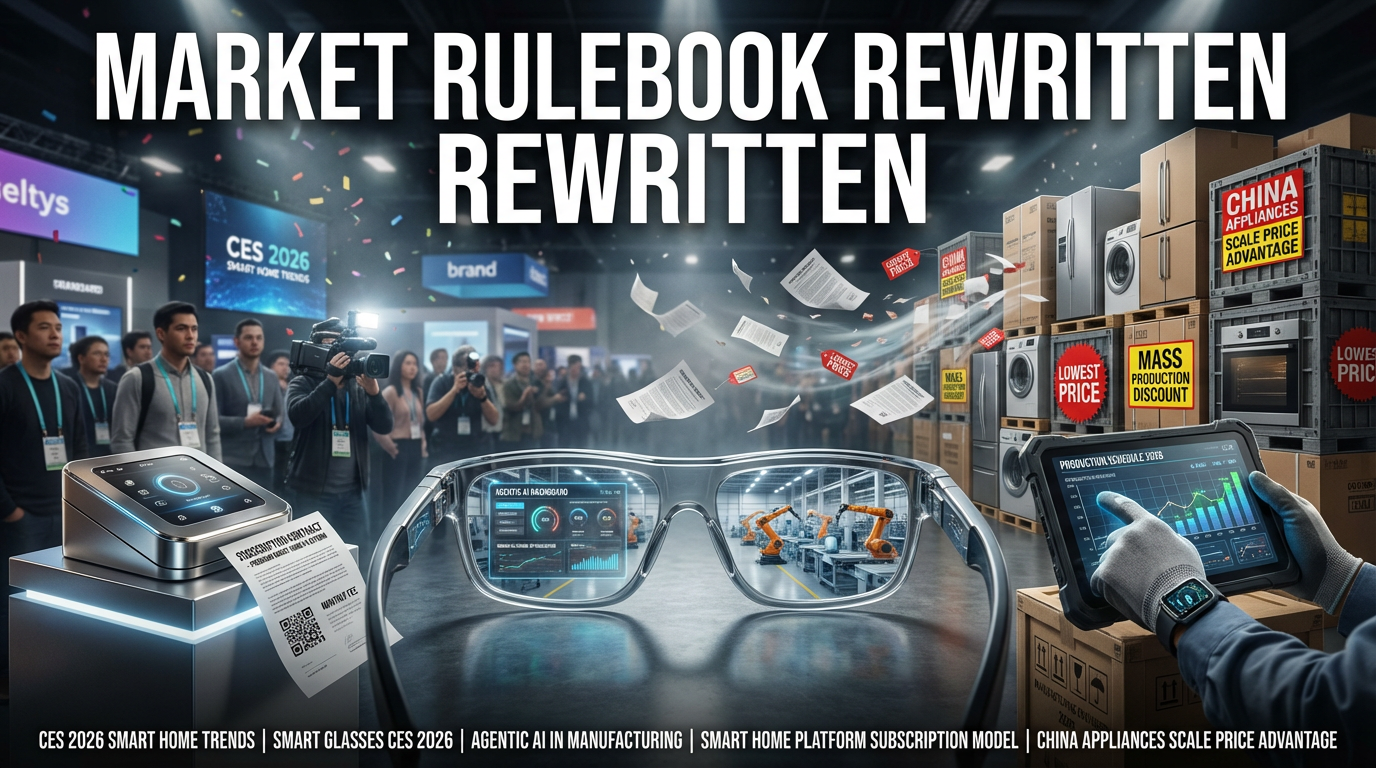● AI Talent Frenzy Zuckerberg’s Billion-Dollar Raids Ignite Global Economic Battle
Mark Zuckerberg’s AI Talent Acquisition Strategy, Global Economic Outlook, and the Future of Silicon Valley
Formation of the Superintelligence Team and the Emergence of ‘The List’
According to reports from the Wall Street Journal, Meta’s CEO Mark Zuckerberg is preparing to form a superintelligence team for AI innovation.In this process, a notable group of talents is included on a candidate list referred to as ‘The List’.Notably, Lucas Byer, who moved from OpenAI to Meta, is mentioned as a key candidate, indicating that this is at the heart of the global artificial intelligence (AI) technology war.This list includes many PhDs from Berkeley and Carnegie Mellon University, as well as individuals with experience from OpenAI and Google DeepMind, suggesting a significant strengthening of Meta’s AI technological capabilities and competitiveness in the future.
Current State of Talent Acquisition and Silicon Valley’s Unique Ecosystem
Not only Meta, but several other large corporations in Silicon Valley are acquiring AI talent in the same manner.These talents are proficient in fundamental subjects essential for algorithm development, such as calculus, linear algebra, and statistics, and possess unique research know-how referred to as ‘tribal knowledge’.Despite their short careers, this group, primarily composed of individuals in their 20s and 30s, shares core ideas for AI innovation through internal networking and informal gatherings, and is expected to significantly influence future economic prospects.
Economic Outlook and Global Investment Trends
This AI talent acquisition race goes beyond being a mere technical indicator and plays a crucial role in the global economic outlook.Giant IT companies like Meta are investing millions, and even tens of millions, of dollars in the AI sector, focusing on core technology development.Simultaneously, the return of overseas researchers from countries like China and research innovations by domestic startups are acting as factors that will reshape the global economic landscape.Particularly, the news that SoftBank Chairman Masayoshi Son is going “all-in” on OpenAI suggests the possibility that the U.S. will continue to hold a dominant position in AI investment and technological competition.
Ancillary Issues and Diverse Aspects of Technological Advancement
Meanwhile, ancillary issues such as the operational methods of AI agents and the power consumption patterns of data centers, as seen in Anthropic’s case, are also drawing significant attention in the economic outlook.These issues simultaneously highlight both the short-term costs and long-term efficiency problems associated with AI technology adoption, thus requiring in-depth analysis from an infrastructure perspective, such as power grids.Furthermore, the continuous publication of AI-related papers and the application of innovative technologies are expected to create positive ripple effects across the global economy and industries.
Summary
Meta’s Zuckerberg is operating ‘The List’ for AI talent acquisition, and key talents in Silicon Valley are emerging as central figures in AI innovation.Concurrently, ancillary issues such as global investment trends, their impact on the economic outlook, and data center power consumption problems are also being closely monitored.All these issues suggest that artificial intelligence and AI technology advancements will bring decisive changes to the global economy in the future.
[Related Articles…] Meta AI Strategy and Future Outlook | OpenAI Global Investment Trends
*Source:

● Kazakhstan Unleashes Crypto Card Instant Fiat, Financial Revolution
Future of the Global Digital Asset Market through the Innovation of the National Bank of Kazakhstan
1. Announcement and Introduction: The Dawn of Innovation
The National Bank of Kazakhstan (NBK) has officially launched the ‘Crypto Card’ as a digital asset payment method. This announcement follows President Kassym-Jomart Tokayev’s directive to activate the digital asset ecosystem, with its core being an immediate payment processing system. This announcement serves as a significant milestone for readers interested in financial innovation and the global economic outlook. Key contents include the background of the central bank’s technology adoption, real-time fiat currency conversion, and the establishment of an integrated infrastructure that makes this possible.
2. Technical Aspects and Infrastructure Configuration
The launched Crypto Card is designed as a cashless payment method within the Astana International Financial Centre (AIFC). Users can make instant payments through wallets from digital asset service providers licensed by the AIFC. The important point is that digital assets are immediately converted to fiat currency upon transaction, which holds significant meaning in terms of blockchain technology and crypto regulation. This system is evaluated as an efficient and secure conversion mechanism in the field of financial innovation.
3. Participating Institutions and Market Reaction
The pilot project involves five major banks in Kazakhstan:△ Halyk Bank, △ ForteBank, △ Freedom Bank, △ Bank RBK, △ Altyn Bank participated,confirming close cooperation and trust among domestic financial institutions. Furthermore, the system is configured to support seamless payment for goods and services for AIFC-based exchange users, drawing positive reactions from a global economic outlook perspective. Such participation and reaction lay the groundwork for the spread of financial innovation related to digital assets across the entire market.
4. Subsequent Plans and the Global Digital Asset Ecosystem
Kazakhstan plans to pursue various pilot projects in the future, including national currency-backed stablecoin payments, tokenization of equity securities, and enhancement of asset custody and trading frameworks collateralized by digital assets. These subsequent plans are key keywords for the global economic outlook and financial innovation, representing a movement that simultaneously seeks the practicality and scalability of digital asset utilization within a new regulatory environment. Notably, a system that provides users with a fast payment experience while complying with regulations is attracting global attention.
5. Conclusion: The Future of Digital Transformation
The launch of this Crypto Card carries more significance than just being a payment method. By integrating digital assets with the real economy and establishing a seamless conversion system with fiat currency, it is presenting a new paradigm to the global financial market. This innovation is expected to serve as a crucial link to the latest economic trends, including blockchain technology, digital asset, crypto regulation, financial innovation, and the global economic outlook.
< Summary >The ‘Crypto Card’ launched by the National Bank of Kazakhstan is an innovative payment method that instantly converts digital assets into fiat currency. Utilizing the cashless payment infrastructure within the Astana International Financial Centre and collaborating with major banks, it signals the expansion of a state-led digital financial ecosystem through a pilot project. This system drives financial innovation from the perspective of blockchain technology and crypto regulation, and is expected to positively impact the global economic outlook.
[Related Articles…]
Global Financial Innovation Trends
Future Outlook of the Digital Asset Market
*Source:

● Physical AI Robots’ Ultimate Evolution, Industry’s Seismic Shift
Physical AI: A Core Strategy Connecting Manufacturing Innovation to the Future of Robotics
The Concept of Physical AI and the Dawn of Industrial Restructuring
Physical AI, unlike mere software AI, is an intelligent system capable of interacting with the real physical world.It holds the potential to drive technology innovation and investment strategy across the global economy.In its early stages, it laid the groundwork for AI models and tools, subsequently evolving into enterprise AI to enhance corporate efficiency.And now, it is entering a phase where AI is fused with robots that autonomously judge and act in physical environments, leading to new manufacturing innovation.
Key Stages of Physical AI Development and Core Technologies
The first stage, pioneering AI, focuses on the fundamental concepts of AI technology, data processing, and image and language analysis capabilities.The second stage is led by enterprise AI, utilized in corporate environments for predictive analytics, design tools, and more.The third stage, Physical AI, actualizes true ‘physical intelligence’ through the combination of AI with robots, enabling AI to directly interact with environments and execute tasks.This developmental process signals a fundamental paradigm shift in the global economy and the field of robotics.
The Role of Major Companies and Technology Platforms
The concept of Physical AI was highlighted by NVIDIA CEO Jensen Huang’s remarks, and his strategy focuses on integrated platforms such as NVIDIA Omniverse, Isaac, Jetson, and CUDA.In particular, Project GR00T is gaining attention as a key project for developing universal Physical AI models for humanoid robots.Tesla, too, presents a future vision for Physical AI through projects like Grok, setting new standards for technological innovation and investment strategy in the global economy.Furthermore, ROS (Robot Operating System) is utilized as an essential software infrastructure for Physical AI implementation, standardizing sensor data processing and actuator control.
The Convergence of Software and Hardware: Beyond Robots to New AI Beings
While traditional robots were limited to pre-programmed repetitive tasks, Physical AI-based robots learn autonomously and respond to their environment in real-time.For this reason, Physical AI can be seen not merely as a robot or software itself, but as an integrated solution of both.AI technologies such as deep learning, reinforcement learning, and computer vision combine with robot hardware to enable autonomous driving, smart manufacturing, and even natural human-robot interaction.
Future Prospects and Investment Ideas
The impact of Physical AI on manufacturing, robotics, and even daily life will reshape the landscape of the global economy in the future.Beyond existing manufacturing methods and automation systems, a future where robots perceive and learn from environments like humans is expected to arrive.This technological integration will lead to more investment and research, centered around five key SEO keywords: technology innovation, investment strategy, global economy, physical AI, and robotics.Strategic moves by major companies like NVIDIA and Tesla foreshadow investment value and market restructuring, with the adoption of Physical AI technology expected to accelerate from small warehouses to large factories.
< Summary >
Physical AI is an innovative technology where AI and robot hardware combine to operate autonomously in the physical world.This technology evolves through stages of pioneering AI, enterprise AI, and performing physical interactions, serving as a core driver for manufacturing innovation and global economic restructuring.The strategies of major companies and technological integration are receiving significant attention in terms of investment and industrial innovation, foreshadowing a future where robots learn and interact like humans.
[Related Articles…]Robotics Innovation and Future Manufacturing StrategiesAI and Investment Strategy: Reading Future Value
*Source: EngineerTV
The Value of Physical AI? What is Physical AI?
● AI’s Context Engine Fueling Economic Future
AI and Economic Outlook: Future Innovations Brought by Context Engineering
1. Background and Key Points of the Emergence of Context Engineering
The answers that LLMs should provide are evolving from simple prompts to context engineering, which offers diverse information tailored to the specific timing.This article analyzes the impact of AI technology advancements on global economic outlook, economic trends, and market dynamics.Specifically, it explains the components of context engineering applied to AI and its operating principles in chronological order, examining how they will be reflected in forecast analysis and the global economy outlook.
2. Evolution from Prompt Engineering to Context Engineering
The first stage highlights that prompt engineering relied on a single line of text instructions.However, context engineering, which is designed for LLMs to use various information such as calendars, past emails, and external APIs before starting a task, is currently gaining attention.This shift broadens the application scope of AI technology and serves as a foundation for deriving more sophisticated answers.
3. Components and Detailed Items of Context
Context engineering consists of several elements in addition to simple prompts.
- System Prompt/Instructions: Includes AI’s basic behavioral principles, examples, and rules.
- User Prompt: Contains the user’s immediate requests and questions.
- State/Conversation History: Reflects the ongoing conversation flow to enhance AI’s understanding.
- Long-Term Memory: Systematically stores long-term information such as past conversations and user preferences.
- RAG (Retrieval-Augmented Generation): Provides the latest external documents and data to the AI to reflect more current information.
- Available Tools: Includes various functions and tools that the model can call upon for real problem-solving.
- Structured Output: Presents clear response formats for the AI to follow, ensuring consistency of results.
4. Advanced AI Agents and Economic Outlook
While low-quality AI agents only process simple requests, advanced agents leverage rich context to generate more natural and situation-appropriate responses.For example, unlike simple meeting scheduling, high-quality agents integrate with the user’s calendar, past emails, and market data to recommend optimal meeting times.This technological advancement not only maximizes corporate work efficiency but also acts as a crucial factor that can suggest new investment opportunities and strategic directions for the global economic outlook.In particular, it helps predict future market trends through top economic SEO keywords such as global economy outlook, economic trends, AI technology, forecast analysis, and market dynamics.
5. Dynamic Generation and Timeliness of Information Provision
Effective context engineering focuses on not just listing information but reconfiguring and summarizing it to provide it in a timely manner, tailored to the situation.This process requires systematic design, following the ‘Garbage In, Garbage Out’ principle, to ensure that unnecessary or incorrect information does not affect the AI’s responses.Furthermore, real-time information updates and external data integration enable stable forecast analysis within a rapidly changing economic environment.
6. Conclusion: Context Engineering and the Future of the Global Economy
Ultimately, the development of powerful and reliable AI agents relies on context engineering beyond mere model updates or simple prompts.The key is providing the right information and tools, aligned with business requirements and the global economic outlook, i.e., global economy outlook and economic trends.This capability will play a crucial role in future market dynamics and forecast analysis, moving beyond short-term technological trends.Therefore, the convergence of AI technology and economic outlook provides valuable insights into how we will respond and evolve in the future.
[Related Articles…]AI Innovation and Market Trend Analysis2023 Global Economic Outlook and Key Trends
*Source:
● Eyeglass Scam Exposed-Your Money, Saved
Scientific Eyeglass Frame Selection Guide: Practical Tips with CEO Kang Sang-gu
00:00 Intro & Video Overview
In today’s video, we explore the scientific criteria that distinguish expensive-looking eyeglass frames from those that are merely expensive, with CEO Kang Sang-gu.Following the video’s flow, we’ve organized the key points from the 00:00 intro to 12:51 in chronological order, which will provide practical help for your eyeglass purchase.This includes common issues of regret regarding price when choosing eyeglasses, detailed product features, and methods to achieve your desired image for as little as 5,000 won.You can also gain insights into economic consumption trends, product price fluctuations, and market dynamics.This article naturally incorporates SEO optimization keywords such as economy, eyeglasses, Kang Sang-gu, price, and regret.
00:17 Subscriber Greeting: A Friendly Encounter with CEO Kang Sang-gu
The first greeting to subscribers conveys the overall tone and friendly atmosphere of the video.This is also a crucial aspect from an economic perspective, helping consumers avoid unnecessary expenditures and make informed choices before purchasing products.
00:34 Why do these eyeglasses look identical but are three times more expensive?
We analyze the reasons for price differences in seemingly identical eyeglass frame designs from structural and functional perspectives.We examine how material quality, manufacturing processes, and design sophistication affect the price.During this process, global economic factors such as economic trends in domestic and international markets and raw material price fluctuations are also mentioned, helping to understand the economic background of purchasing decisions.
03:03 Common Characteristics of Eyeglasses You Regret After Spending Money On
We introduce typical examples of eyeglass choices that lead to regret.The content focuses on cases where the focus is solely on design, discomfort from actual wear, and side effects occurring during prolonged use.Alongside this, we highlight the importance of rational consumption habits and choices from the perspective of economic spending.
05:31 If You Don’t Know ‘This Standard’, You’ll Wear Uncomfortable Eyeglasses for Life
We provide detailed explanations of the most important criteria for choosing eyeglasses.Key items covered include product durability, wearing comfort, and selecting a design that suits your face shape.This standard is emphasized not only for improving appearance but also for its long-term effect of reducing financial burden.
10:10 How to Create Your Desired Image with 5,000 Won Eyeglasses
We suggest effective methods for choosing affordable yet satisfyingly designed eyeglasses without being deceived by high prices.Tips that cover both practicality and economy are introduced, providing detailed guidelines to help consumers achieve the best value for their money.
12:51 Practical Tips to Make Your Eyes Appear Less Small When Getting Eyeglasses
We offer advice that considers facial proportions and image improvement when selecting eyeglasses.Specifically, concrete design selection methods and wearing tips to prevent eyes from looking small are introduced, directly helping consumers improve their appearance.
[Related Articles…]CEO Kang Sang-gu’s Eyeglass Selection Know-howBest Eyeglass Frame Selection Method for the Price
*YouTube Source: [ 지식인사이드 ]
– 가격만 비싸고 구린 안경테 거르는 과학적인 방법 (강상구 대표 1부)
● LLM Hack Fallout Global Economy in Peril – Guard AI
LLM Hacking Defense Strategy: A Practical Guide to Securing AI
Step 1: Understanding LLM Hacking and Prompt Injection
LLM hacking encompasses various threats such as data leakage, jailbreaking, and malicious prompt injection.Hacking attackers target security vulnerabilities in LLMs, potentially accessing sensitive information or inducing abnormal results.Real-world cases have demonstrated the risks of data exposure and system disruption, and the safety of AI systems can negatively impact the global economy and economic outlook.
Step 2: Utilizing Policy Engines and Proxies
For effective defense, implementing policy engines allows for the pre-setting of sophisticated rules applicable to AI systems.The intermediary role of proxy servers manages and filters access from external requests to internal data, further strengthening security.These strategies reduce the possibility of economic crises caused by hacking and positively influence stable market analysis and investment strategy formulation.
Step 3: Deepening Defense and Applying Multi-Layered Security
The core is not to rely on a single security measure, but to apply a multi-layered defense (Defense-in-Depth) structure.Combining policy engines, proxies, authentication, and monitoring systems minimizes security vulnerabilities and allows for quick detection of suspicious activities.Such systematic security measures promote the development of innovative technologies and play a crucial role in strengthening AI security during the digital transformation process.
Step 4: Economic Implications and Impact on the Global Economy
LLM hacking defense strategies extend beyond mere technical problem-solving; they are key issues connected to the global economy.Strengthening security lowers operational risks for businesses and provides stability to investment strategies.In a situation of increasing economic outlook uncertainty, systematic AI security systems maintain market confidence and contribute to preventing economic crises.In investment strategies and market analysis, AI security is gaining attention as a core element of innovative technology and is expected to act as a growth engine for related industries.
Summary
LLM hacking involves threats such as data leakage, jailbreaking, and malicious prompts,and proactive response utilizing policy engines and proxies is crucial.By building a multi-layered security system, overall AI security can be strengthened,and simultaneously, risk factors related to the global economy can be reduced, increasing the stability of economic outlook and investment strategies.
[Related Articles…]
*YouTube Source: [ IBM Technology ]
– LLM Hacking Defense: Strategies for Secure AI
● CES 2025 Agentic AI – Economy’s Epicenter
The Future of Agentic AI and Economic Outlook as Seen at CES 2025
1. The Genesis of Agentic AI: CES 2025 and Jensen Huang’s Message
At the CES 2025 keynote, NVIDIA’s Jensen Huang directly delivered a message foreshadowing a transition beyond the era of generative AI to an age of agentic AI, where AI can reason, plan, and execute.This announcement serves as a key resource for examining global economic forecasts, the latest economic trends, and the future of technological innovation.Jensen Huang’s remarks offer practical insights into the broader impact on the economy and industry, beyond mere technological advancement.From the perspective of economic outlook and market analysis, this shift acts as a crucial factor directly related to corporate management, investment strategies, and talent management.
2. Core Elements and Evolution of Agentic AI
Agentic AI signifies a technological advancement beyond existing generative AI, enabling autonomous reasoning, planning, and execution, rather than just simple content creation.While early generative AI focused on creating various content like text, images, and videos, agentic AI includes complex problem-solving and decision-making support capabilities.This technological evolution is intertwined with the latest economic trends and technological innovations, such as AI algorithms, big data, and cloud computing, drawing significant interest from a market analysis perspective.Specifically, companies are expected to actively leverage agentic AI for efficient business processing and strategic direction setting.
3. Impact on Economy and HR Innovation
The case of the AI instructor introduced by Samsung SDS clearly demonstrates how Agentic AI is applied to HR innovation.Companies are seeking innovation in various HR processes, including talent acquisition, training, and internal communication, through AI technology.These changes will play a crucial role in short-term cost reduction and increased operational efficiency, and long-term talent competitiveness enhancement and shifts in the global economic outlook.From the perspective of the latest economic trends and economic outlook, the adoption of agentic AI is analyzed to have a decisive impact on strengthening corporate competitiveness and market analysis.
4. Future Prediction: Changes in Global Markets and the Economy as a Whole
The advancement of agentic AI is expected to trigger structural changes across the entire global economy.Technological innovation will lead to a reorganization of existing industrial structures, creating new business models and investment opportunities.Specifically, from the perspective of global economic outlook and market analysis, industries adopting AI technology are predicted to grow rapidly, providing significant assistance in economic forecasting and analyzing the latest economic trends.At this juncture where economy and technology develop in tandem, agentic AI is expected to be utilized as a powerful tool for domestic and international businesses, investors, and policymakers.
[Related Articles…]Agentic Strategies and Market AnalysisGlobal Economic Changes Driven by AI Innovation
*YouTube Source: [ 삼성SDS ]
– [3분 IT 인사이트] 생성형 AI 다음은? 에이전틱 AI가 온다! 젠슨 황이 언급한 Agentic AI란?


